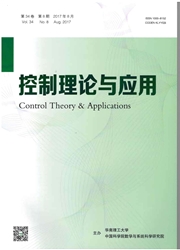

 中文摘要:
中文摘要:
针对增程式电动汽车油耗和排放优化问题,首先综合考虑增程器的油-电转换效率特性、HC排放特性、CO排放特性以及NOx排放特性,构造了增程器油耗和排放多目标优化模型,同时结合实际增程器工作中的机械和电气约束特征,分析了多目标优化模型的3种转速、转矩约束条件.然后采用多目标粒子群算法和加权尺度法对增程器油耗和排放多目标优化模型进行了离线优化,得出了增程器的最优全局工作点和各功率值下的多目标最优工作曲线.最后,采用NEDC,FTP和HWFET3种测试工况在AVL Puma Open发动机测试台架上进行了实验,并和基于最佳制动燃油消耗率(BSFC)的油耗单目标优化模型进行了比较.结果表明,本文提出的方法能够以微弱的油耗增加为代价,有效的改善整车的HC,CO和NOx排放.
 英文摘要:
英文摘要:
To deal with the fuel consumption and emissions optimization problem of the range extender electric vehicle, we build a multi-objective optimization model (MOPM) for the auxiliary power unit (APU) fuel consumption and emissions, in which the APU characteristics of the fuel-electricity conversion efficiency, HC emissions, CO emissions and NOx emissions are all considered. Meanwhile, three kinds of APU speed and torque constraints of the MOPM are analyzed according to the features of mechanical and electrical limits on real-world APU operation. Then, the multi-objective parti- cle swarm optimization (MOPSO) algorithm and weighted metric decision method are employed to solve the MOPM. The APU global optimal operating point and multi-objective optimal operating curve under specific power are obtained conse- quently. Finally, experiments are carried out on AVL Puma Open engine test bench under NEDC, FTP and HWFET driving cycles. Compared with the results of the traditional brake specific fuel consumption (BSFC) based fuel consumption single objective optimization model, we find that the proposed multi-objective optimization model improves HC, CO and NOx emissions for all of the three tested driving cycles at the expense of a small increment in fuel consumption.
 同期刊论文项目
同期刊论文项目
 同项目期刊论文
同项目期刊论文
 期刊信息
期刊信息
